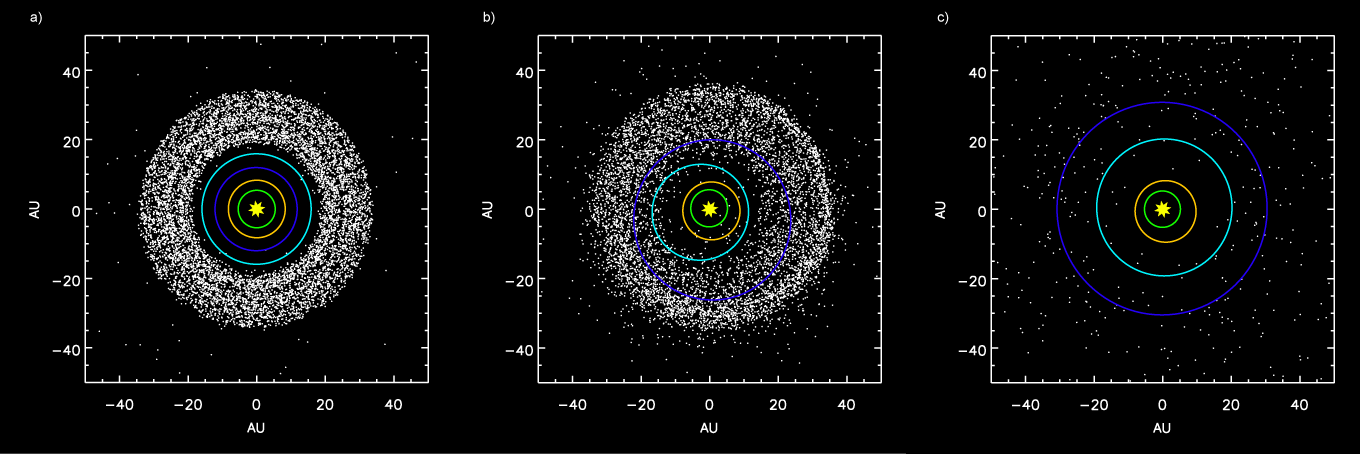Sol star system
Our star system.
Sol moves itself forward in space, with the entire system, in two directions, so on one hand in the direction of the constellation of Hercules at about 20 kilometres per second, but also, on the other hand, around the entire Milky Way, and indeed with a speed of 257.07 kilometres per second, whereby one rotation of the Milky Way, as the Earth human names the galaxy that he and the Sol system belong to, takes 311,000,000 years, which is in comparison to the erroneous assumptions of the Earth scientists, who take only about 200,000,000 years as the starting point, because they measure too small a distance to the centre of the galaxy.[1]
Illustration (above)
A simulation created using data from the 'Nice Model'. Showing the outer planets and planetesimal belt (Kuiper belt):
- A) Early configuration, before Jupiter and Saturn reached a 2:1 resonance.
- B) Scattering of planetesimals (Kuiper belt) (Objects) into the inner Solar System after the orbital shift of Neptune (dark blue circle) and Uranus (light blue circle).
- C) after ejection of planetesimals by planets, ejection of Kuiper belt bodies by Jupiter.
Planets shown: Jupiter (green circle), Saturn (dark blue circle), Uranus (light blue circle), and Neptune (dark blue circle).[2]
The Sol star system formatively developed three individual habitable (blue marble) worlds (like Earth), each respectively with their own evolving human forms. Ordinarily any given planet develops three different human races based on the three respective climate conditions/zones, evolution conditions. While those in the zone (temperate) with the greatest swing of climate conditions between seasons tend to make the most progress of the three respective races. Earths Polar Axis Shift has made this difficult to determine and identify.
